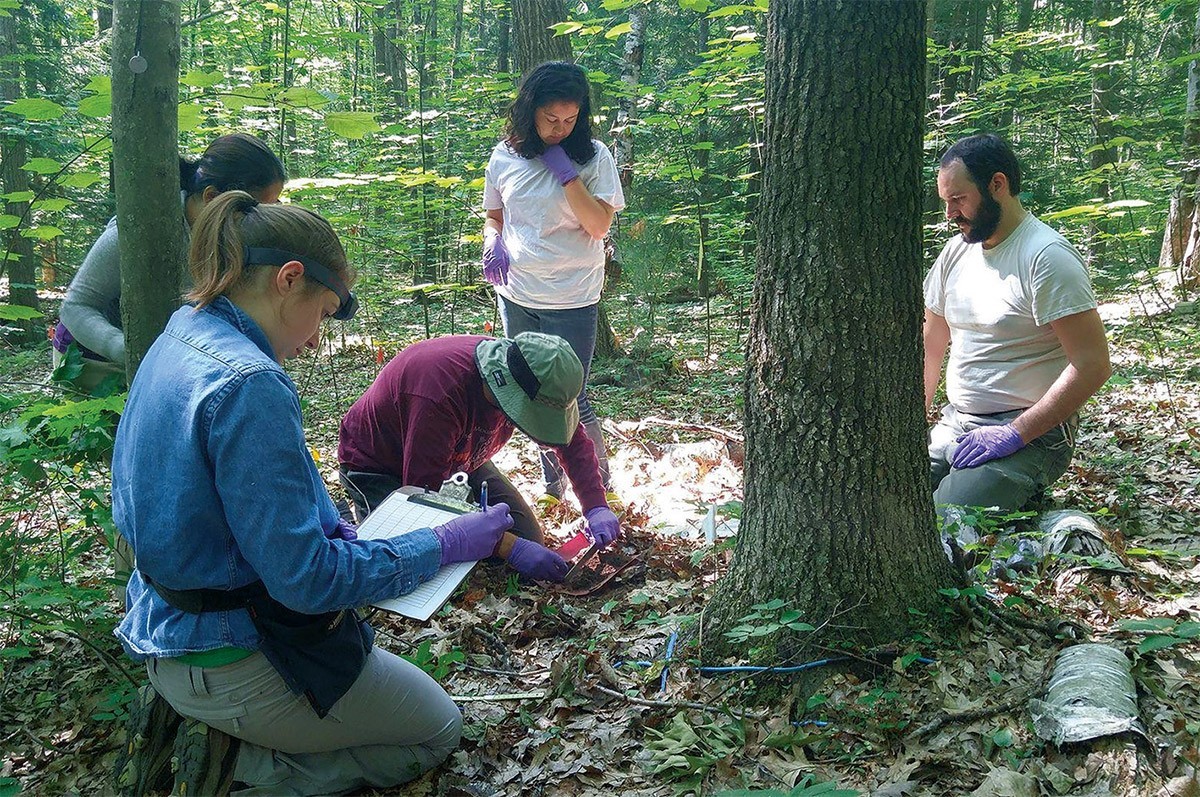
Biodiversity has long been known to be a significant factor in the amount of carbon stored in forests. Forests with many different species of trees store more carbon than forests consisting of fewer species. According to University of Vermont ecologist E. Carol Adair, that’s because different species get their resources from different places. “One [tree] might be shallow-rooted and get nutrients and water from surface soils, while another may have deep roots and get nutrients from down deep,” she said. “So, if a forest has a diversity of trees, then it is more fully using all of the available resources.”
But Adair was skeptical that biodiversity was the most important factor in forest carbon storage. She said that most studies that looked at the role of biodiversity on carbon storage focused on tiny plots of just one or two square meters where the climate and soil type were constant. She wondered if biodiversity was as important on a much larger scale.
She and a group of colleagues analyzed data collected from thousands of forest plots in Quebec to learn how biodiversity compares to other factors when calculating carbon storage. As she suspected, she found that while biodiversity is an important factor in carbon storage among groups of live trees, other features such as climate, site topography, time since the last fire, and the specific traits of the trees are more important in the broader landscape.
“What really seems to matter most is how well drained the forest is,” Adair said, explaining that wet sites have about 400 percent more carbon than dry sites. “Swampy sites contain a lot more carbon because microbes involved in decomposition slow down when there isn’t enough oxygen, and too much water reduces oxygen. For organic carbon on the forest floor, it’s all about the drainage.”
She also noted that the kind of trees in the forest matters more than how many different kinds grow there. Sites that have tree species that grow to be very large store more carbon than sites with smaller tree species.
This isn’t to say that the effect of biodiversity on carbon storage is trivial. Foresters can increase the amount of carbon in live trees by about a third by increasing tree diversity. “But it doesn’t have as large an impact as drying out a site might,” Adair said. “If things get warmer and soils get drier, then you have a much greater potential to lose carbon from your forest, and increasing biodiversity probably won’t be able to offset that.”
The next step for the research team is to pinpoint why biodiversity affects carbon storage so much on a small scale but so little on a larger scale. The researchers are also developing management recommendations for increasing carbon storage in northern forests.

